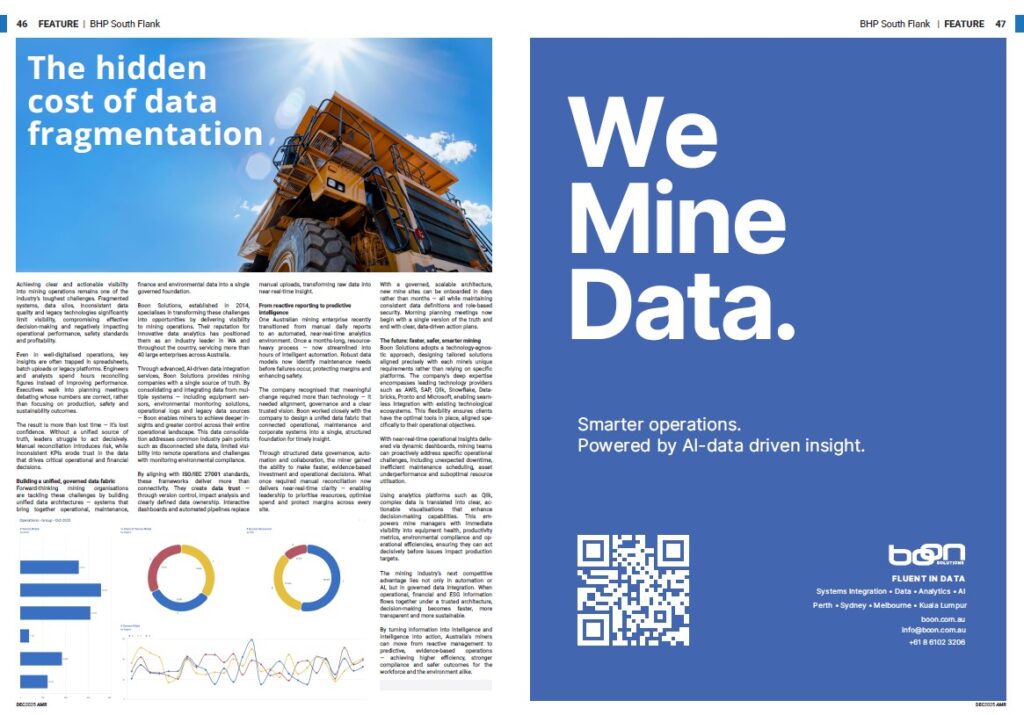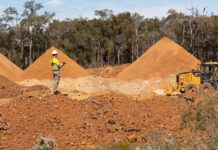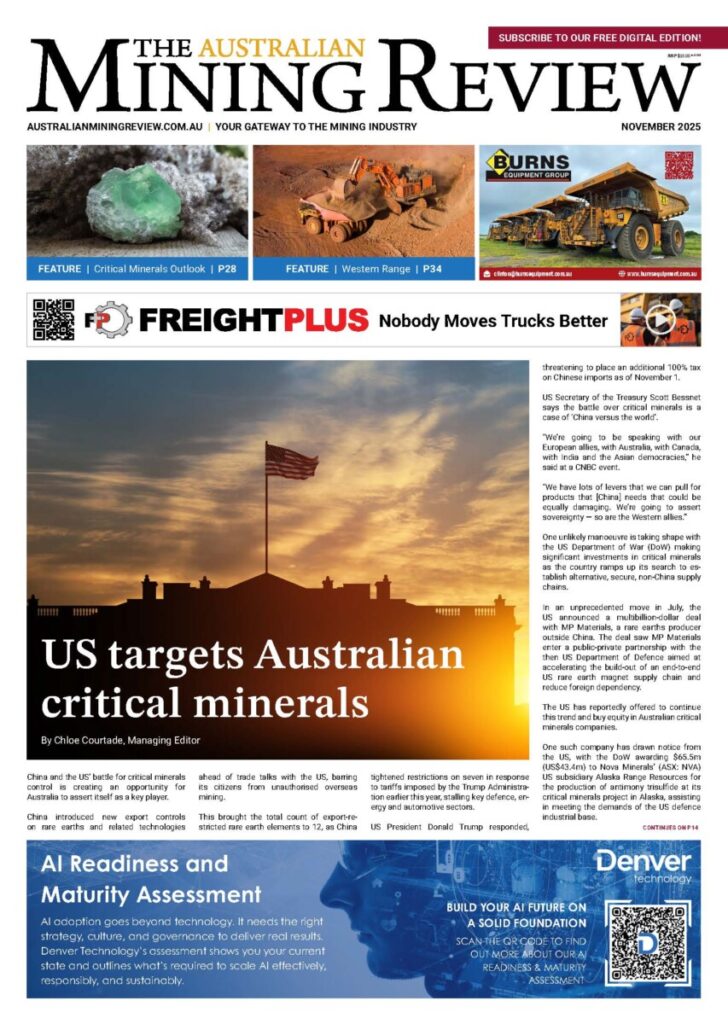The hidden cost of data fragmentation

Achieving clear and actionable visibility into mining operations remains one of the industry’s toughest challenges. Fragmented systems, data silos, inconsistent data quality and legacy technologies significantly limit visibility, compromising effective decision-making and negatively impacting operational performance, safety standards and profitability.
Even in well-digitalised operations, key insights are often trapped in spreadsheets, batch uploads or legacy platforms. Engineers and analysts spend hours reconciling figures instead of improving performance. Executives walk into planning meetings debating whose numbers are correct, rather than focusing on production, safety and sustainability outcomes.
The result is more than lost time — it’s lost confidence. Without a unified source of truth, leaders struggle to act decisively. Manual reconciliation introduces risk, while inconsistent KPIs erode trust in the data that drives critical operational and financial decisions.
Building a unified, governed data fabric
Forward-thinking mining organisations are tackling these challenges by building unified data architectures — systems that bring together operational, maintenance, finance and environmental data into a single governed foundation.
Boon Solutions, established in 2014, specialises in transforming these challenges into opportunities by delivering visibility to mining operations. Their reputation for innovative data analytics has positioned them as an industry leader in WA and throughout the country, servicing more than 40 large enterprises across Australia.
Through advanced, AI-driven data integration services, Boon Solutions provides mining companies with a single, trusted source of truth. By consolidating and integrating data from multiple systems — including equipment sensors, environmental monitoring solutions, operational logs and legacy data sources — Boon enables miners to achieve deeper insights and greater control across their entire operational landscape. This data consolidation addresses common industry pain points such as disconnected site data, limited visibility into remote operations and challenges with monitoring environmental compliance.
By aligning with ISO/IEC 27001 and ISO 9001 standards, these frameworks deliver more than connectivity. They create data trust — through version control, impact analysis and clearly defined data ownership. Live dashboards and automated pipelines replace manual uploads, transforming raw data into real-time insight.
From reactive reporting to predictive intelligence
One Australian mining enterprise recently transitioned from manual daily reports to an automated, near-real-time analytics environment. Reporting latency dropped from 24 hours to under five minutes. Predictive models now identify maintenance needs before failures occur, protecting margins and enhancing safety.
The company recognised that meaningful change required more than technology — it needed alignment, governance and a clear trusted vision. Boon worked closely with the company to design a unifed data fabric that connected operational, maintenance and corporate systems into a single, structured foundation for timely insight
Through structured data governance, automation and collaboration, the miner gained the ability to make faster, evidence-based investment and operational decisions. What once required manual reconciliation now delivers near-real-time clarity — enabling leadership to prioritise resources, optimise spend and protect margins across every site.
With a governed, scalable architecture, new mine sites can be onboarded in days rather than months — all while maintaining consistent data definitions and role-based security. Morning planning meetings now begin with a single version of the truth and end with clear, data-driven action plans.
The future: faster, safer, smarter mining
Boon Solutions adopts a technology-agnostic approach, designing tailored solutions aligned precisely with each mine’s unique requirements rather than relying on specific platforms. The company’s deep expertise encompasses leading technology providers such as AWS, SAP, Qlik, Snowflake, Databricks, Pronto and Microsoft, enabling seamless integration with existing technological ecosystems. This flexibility ensures clients have the optimal tools in place, aligned specifically to their operational objectives.
With real-time operational insights delivered via dynamic dashboards, mining teams can proactively address specific operational challenges, including unexpected downtime, inefficient maintenance scheduling, asset underperformance and suboptimal resource utilisation.
Using analytics platforms such as Qlik, complex data is translated into clear, actionable visualisations that enhance decision-making capabilities. This empowers mine managers with immediate visibility into equipment health, productivity metrics, environmental compliance and operational efficiencies, ensuring they can act decisively before issues impact production targets.
The mining industry’s next competitive advantage lies not only in automation or AI, but in governed data integration. When operational, financial and ESG information flows together under a trusted architecture, decision-making becomes faster, more transparent and more sustainable.
By turning information into intelligence and intelligence into action, Australia’s miners can move from reactive management to predictive, evidence-based operations — achieving higher efficiency, stronger compliance and safer outcomes for the workforce and the environment alike.
























